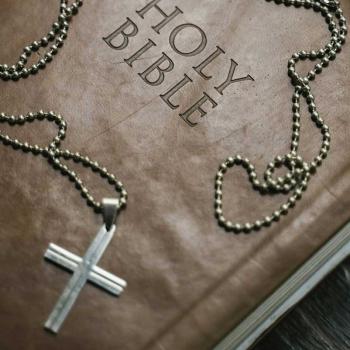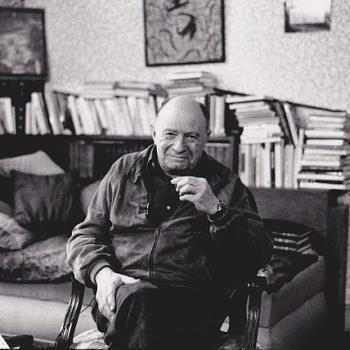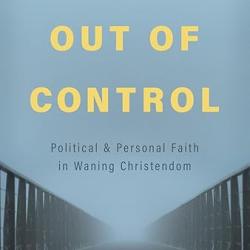Here I want to talk briefly about types of Pietism. Like every movement, Pietism had and has no boundaries. I’ve already described some of its common features that form the movement’s center. (In an earlier post about evangelicalism I talked about bounded set versus centered set categories and argued that movements cannot have boundaries.)
From its earliest days Pietism was divided into two camps–the “church Pietists” and the “radical Pietists.” The former, like Spener, Francke and Zinzendorf viewed their Pietism as a reform movement within the church (in their cases the state churches of Germany). Even Zinzendorf brought the Moravians within the Evangelical Church of Germany (Lutheran) as a sub-group. These early Pietist leaders believed in baptismal regeneration but averred that most (if not all) baptized persons fall away from grace and need a conversion that is more than mere confirmation. Francke insisted that such conversion must be emotional and (for most people) datable. He called it Busskampf–the struggle of repentance. These early church Pietists were persecuted by many leaders of the state churches, but they did their best to stay within those anyway. They emphasized doctrinal orthodoxy and liturgy but…
One thing that held and holds all Pietists together (that I have only hinted at before) is their belief that doctrine, although important, is secondary to what I call conversional piety–the personal relationship with Jesus Christ that begins with conversion (which is initiated by prevenient grace–a term they used independently of Arminians) and continues with a life of Jesus-and-cross centered devotion and holy living enabled by the indwelling Holy Spirit. Their critics among the orthodox Protestants of their time insisted that doctrine and sacraments are more important than personal experience and accused even the church Pietists of “enthusiasm” (their word for fanaticism).
The radical Pietists by-and-large left the churches and either developed individual semi-mystical lives of personal piety apart form any formal church structure or formed small groups and networks of such groups as alternatives to the historical churches (which were often if not always associated with the state in some way). One such radical, separatist Pietist of the early Pietist movement was Gottfried Arnold (1666-1704) who floated in and out of the state churches and finally landed quite firmly in a kind of individualistic “seeker” mode. But he traveled around Europe speaking to radical Pietist groups (most cities of any size had such) and criticizing historical churches and calling for a radical renewal of pure New Testament Christianity. He was influenced by the Protestant mystic Jakob Boehme.
One thing to remember is that during this time period in Europe (roughly the 1670s through the mid-1700s) most countries on the continent did not allow any churches to exist outside the state churches. Pietists who met in conventicles without benefit of state-paid clergy were often arrested and imprisoned. So, the radicals found it difficult to form alternative churches. Some of them eventually did but had to flee to Britain or America under persecution or connect up with some officially tolerated dissenter group such as the Mennonites.
I think there was a third category of Pietists that inhabited a middle space between church Pietism and radical Pietism. These were Pietists who wanted to leave the state churches and form independent believer churches (free churches) and radical Pietists who were uncomfortable with separatism and individualism and wanted to form such independent churches. Eventually they found each other and did form free churches but suffered so much persecution they had to hide or run (usually to America).
One such group (middle between church Pietism and radical Pietism) were the Lasere of Sweden during the early and mid-1800s. Influenced by writings from Germany (Arndt, Spener, Francke, et al.) and coming under influence from German Baptists they were members of the Swedish Lutheran Church (every citizen had to be) that met in homes (and later rented spaces) for prayer and Bible reading (thus their name which means roughly “readers”) without benefit of clergy. Many of them were imprisoned. Some of them formed underground free churches. Most of them eventually fled to America and there started Swedish Baptist churches and the Evangelical Free and Covenant churches.
Scandinavian and German Baptist Pietists in America were first under the umbrella of the old Northern Baptist Convention. Eventually many of them separated to found their own denominations such as the North American Baptist Convention (German) and the Baptist General Conference (Swedish). Others stayed within the Northern Baptist Convention while struggling to maintain their ethnic and cultural identities. Eventually all of those were absorbed and lost their original Pietism and German and Scandinavian ways. However, scattered across the landscapes of the northern plains (e.g., South Dakota) one still occasionally sees a Danish Baptist church (for example) that is pretty much independent of any denomination. These have tended to dwindle and die out.
One thing that is interesting about this history is that these German and Scandinavian Baptist groups were until recently Pietists first and Baptists second. (I say “until recently” because they have been joined by non-Pietists and have struggled to hold onto their Pietist flavor which includes a disinclination to fight over secondary doctrines such as eschatology, creationism, inerrancy and forordination.) American fundamentalism eventually made its way into these Pietist churches and changed their character to some extent so that they have struggled with inner tensions over inerrancy (for example).
All Pietism is “heart Christianity.” Original, paleo-Pietism generally held onto orthodox doctrine. (There were exceptions among the radicals.) But some Pietists of the late 1700s and early 1800s drifted off into liberalism under the influence of the Enlightenment and Romantic movements. The most notable example was Friedrich Schleiermacher, the “father of modern theology.” Schleiermacher was raised in a Pietist home and attended Pietist schools and the University of Halle (founded by Pietists but during his time increasingly influenced by Enlightenment thinking). Schleiermacher called himself a “Pietist [really ‘Herrnhutter’ or Moravian] of a higher order.” Most later liberal Protestants shed Schleiermacher’s Pietism along with orthodoxy. But there has always remained a strain of liberalized Pietism within Protestant so-called mainline churches. Those within this strain are recognizable insofar as they emphasize inner experience of God (however generic) over social activism. Unfortunately for them (and all of us) they sucked in other, often heretical, mystical and experiential impulses such as Eastern meditation and esoteric Christianity (Swedenborg, Theosophy, Steiner’s Anthroposophy, etc.). Others among them have drawn heavily on Eastern Orthdodoxy (the Jesus Prayer) and Roman Catholicism (contemplative, centering prayer). These would be foreign to original Pietism.
An excellent example of the difference (between original Pietist spirituality) and these foreign experiential impulses is given in Donald Bloesch’s excellent book The Struggle of Prayer (1988). There he contrasts “prophetic prayer” (which he considers biblical) with contemplative, “wordless” prayer (which he considers basically Catholic).
Many critics of Pietism have latched onto these deviations from historic Pietism and used them to smear all Pietism as subjectivist, mystical, wide open to non-Protestant and liberal influences. I, for one, do not consider Schleiermacher and his followers real Pietists. I like to define theological terms as much as possible by their original meanings. I do not recognize any real continuity between modern, liberal Protestant subjectivism and experientialism (“finding God within yourself” without true conversion or any belief in the supernatural power of God) and historical Pietism. Schleiermacher’s “God-consciousness” bore little to no resemblance to Pietist conversional piety. His was a religious a priori of which Christian God-consciousness was simply the Christian variety. The original Pietists turned over in their graves when the adult Schleiermacher called himself a Pietist.
All this is very relevant to today because one can still see the rift between Pietism and Protestant scholastic orthodoxy within the evangelical movement especially in America. Real Pietists are orthodox and even fundamentalists can be and usually are pious. The difference, giving rise to tension, lies in emphasis. Evangelical Pietists such as Stanley J. Grenz was, emphasize conversional piety over doctrine while evangelicals in the Old Princeton School tradition and fundamentalists emphasize doctrine. Evangelical leaders in the second party are becoming increasingly vocal and even strident in their criticisms of the first party and of Pietism in general. I object that they are not talking about real Pietism; they are drawing on Schleiermacher’s false Pietism and using that to smear their fellow Pietist evangelicals as subjectivists. As one evangelical critic of Pietist told me “Pietism is nothing more than a mask for doctrinal indifference.” If we are talking about real, historic Pietism that is simply false. He was talking about (among others) Robert Schuller. I ask how that man and his conservative evangelical friends would like it if Pietists used as the paradigm for their doctrinal focus Carl McIntire? I know he wouldn’t like that.
I want to recover and reclaim true, historic Pietism–as embodied among us recently by Donald G. Bloesch–my model of a true Pietist theologian (who was also a writer of devotional books and hymn writer) and also by Stan Grenz and Richard Foster (and Foster’s Renovare movement). To Pietism’s evangelical critics I say–please go back and read original Pietist sources such as those you will find in the anthology The Spirituality of the German Awakening (a volume in the series The Classics of Western Spirituality).












